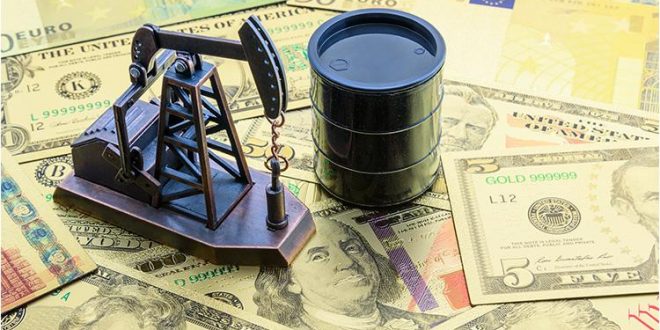Oil prices fell more than 2% on Monday afternoon during Asia hours after OPEC and its allies agreed to end oil production cuts.
Brent crude futures fell 2.13% to $72.02 per barrel, while U.S. crude futures fell 2.09% to $70.31 per barrel.
But having a deal is “better than no deal” for the Organization of the Petroleum Exporting Countries and its allies — known collectively as OPEC+, according to an oil analyst who said a continued stalemate could mean rising production and plunging prices.
“I think they decided that having a deal was better than no deal,” Andy Lipow, president of Lipow Oil Associates, told CNBC.
The group agreed to increase production by 400,000 barrels per day on a monthly basis from August, as it moves to phase out production cuts of about 5.8 million barrels per day by September 2022. It comes as oil prices hover close to their highest levels in more than two years.
Negotiations to increase production previously stalled, after the United Arab Emirates rejected the group’s proposal for the rollback of the oil cuts. It left the industry as well as investors in limbo as experts warned that prices could either hit the roof or collapse without an agreement.
“If they didn’t have a deal, they would be left to their own devices and we could really see a free for all on increasing production from all of them, at a time when the return of demand still remains in question, due to the delta variant,” Lipow told CNBC’s “Street Signs Asia” on Monday.
He was referring to the highly transmissible Covid variant that’s spread to more than 100 countries, pushing cases to record highs in several countries.
“This agreement should give market participants comfort that the group is not headed for a messy breakup and will not be opening up the production floodgates anytime soon,” said Helima Croft, head of global commodity strategy at RBC Capital Markets.
Last year, to cope with lower demand as the Covid crisis hurt economies and people could not travel much, OPEC and its allies agreed to curb output by almost 10 million barrels a day from May 2020 to April 2022.
“So the one thing that we do know is that OPEC+ did not want to see a return to prices last year in the $10 to $20 a barrel range,” Lipow said.
Prices fell to historical lows last year, as the impact of the pandemic wiped out oil demand. The West Texas Intermediate crude fell below zero for the first time, before recovering to over $10 a barrel at one point. Brent oil fell to a nearly two-decade low of nearly $20 per barrel.
Time to buy
This could be a buying opportunity for investors, says Lipow.
The “silver lining” is that the pace that OPEC+ is restoring oil production is still slower than the increase in global demand for oil, he said. That will support prices ahead.
“Really, this is a buying opportunity for well over the next six months, as those inventories around the world continue to decline. Here in the United States, we’ve reduced our crude oil inventories by 75 million barrels since April 1, and that’s indicative of what’s happening around the rest of the world.”
Lipow said oil prices could go up to $78 a barrel for international benchmark Brent.
“I still think that the world has to wrestle with a return of demand and this delta variant that we’re seeing spreading around the world. And that, of course, is keeping a dampener on prices,” he said.
Croft, too, cautioned that uncertainty could still lie ahead, as OPEC might reverse the 400,000 barrels a day increase.
“As the Saudi oil minister stated, the group can pause, reverse or continue with the 400 kb/d monthly increase based on key contingencies such as Iran … and global COVID case counts,” she wrote in a note on Sunday.
The U.S. and Iran are re-negotiating a 2015 nuclear deal, which could mean a return of Iranian oil to the market.

 Iran Energy News Oil, Gas, Petrochemical and Energy Field Specialized Channel
Iran Energy News Oil, Gas, Petrochemical and Energy Field Specialized Channel



